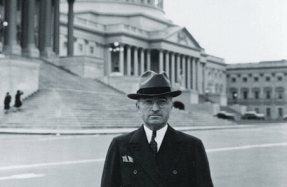

On June 2, 1967, with Wing Commander Colonel Robert Scott away, Colonel Jacksel “Jack” Broughton was serving as acting commander of the United States Air Force’s 355th Tactical Fighter Wing, based at Takhli, Thailand. Broughton had flown a strike mission into North Vietnam that day and, after landing, he went to his office to catch up on paperwork and then headed to the officers’ club for dinner. As he ate, two pilots—Majors Frederick G. “Ted” Tolman and Alonzo “Lonnie” Ferguson—asked to talk to him. They knew Broughton was someone who listened to and cared about his pilots, and they wanted to discuss the mission they had just flown.
Tolman related what had happened. He and Ferguson had been piloting Republic F-105 Thunderchiefs that day, with the call signs Weep 3 and Weep 4, Tolman flying lead and Ferguson as wingman. Their mission was to fly through Route Pack 6, a heavily defended corridor over North Vietnam, and bomb a railroad junction. Along the way, Tolman and Ferguson had flown over the North Vietnamese port of Cam Pha.
Like the larger harbor of Haiphong 40 miles to the southwest, Cam Pha had been placed off limits for American attacks under the Rules of Engagement (ROE) set by Secretary of Defense Robert McNamara for Rolling Thunder, the tactical bombing of North Vietnam. President Lyndon B. Johnson and McNamara both wanted to avoid any military actions that might “widen the war,” as McNamara put it. That meant avoiding anything that could bring Red China or the Soviet Union into direct warfare with the






